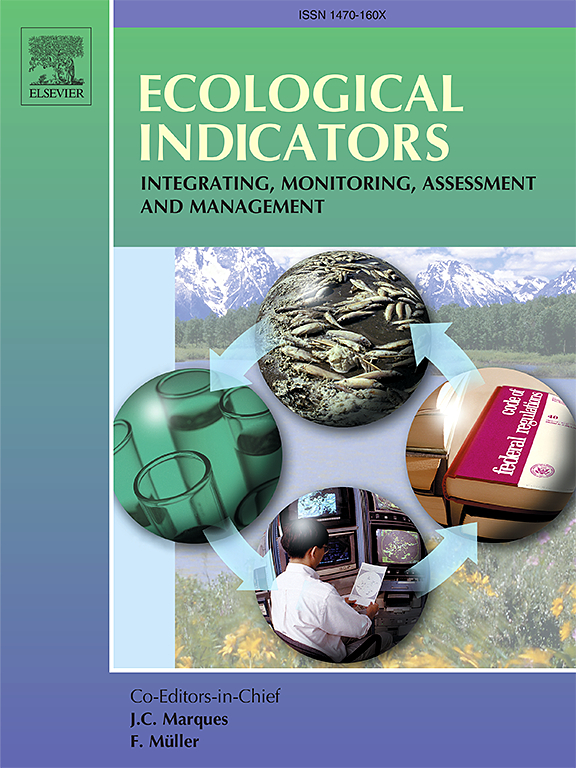城市绿地影响主观幸福感的系统综述:对其复杂机制的解释
IF 7
2区 环境科学与生态学
Q1 ENVIRONMENTAL SCIENCES
引用次数: 0
摘要
随着全球城市发展的迅速加强,生态环境与人类福利之间的相关性变得更加明显。城市绿化对个人福利的影响,作为城市生活的一个重要方面,一直是众多学者关注的焦点。然而,关于城市绿地影响主观幸福感的复杂机制,研究结果并不一致。本研究旨在探讨不同国家和地区的主观幸福感差异,评估城市绿地对主观幸福感的影响,并阐明城市植物群在主观幸福感中的各种作用。本研究采用随机效应荟萃分析方法(meta-analysis structural equation modeling, MASEM),对51项研究(调和均值N = 28252)进行meta分析,验证城市绿地与个人幸福感之间各中介因素的影响差异。元分析结果显示,城市植物寿命与居民个人幸福感呈显著正相关,r = 0。322, 95% ci = [0;219 - 0。417]。通过结构方程分析发现,当地社区团结、空气污染和锻炼在一定程度上调节了结果,强调了身体活动的更大重要性。研究结果表明,城市绿地的存在显著影响居民的主观健康,邻里团结、空气污染和体育活动是影响居民主观健康的主要渠道。因此,推进这些地区的景观规划和管理对于提高他们的整体健康水平至关重要。本文章由计算机程序翻译,如有差异,请以英文原文为准。
A systematic review of urban green spaces affecting subjective well-being: an explanation of their complex mechanisms
As global urban development intensifies swiftly, the correlation between the ecological setting and human welfare has grown more pronounced. The influence of urban greenery on individual welfare, as a crucial aspect of urban life, has been the focus of numerous academics. However, there are inconsistent research findings on the complex mechanisms by which urban green space affects subjective well-being. This research aimed to investigate discrepancies in subjective well-being across countries and regions, assess the influence of urban green areas on subjective well-being, and clarify the various roles urban flora plays in this regard. This research introduces a random effects meta-analysis involving 51 studies (reconciled mean N = 28252), employing meta-analyzing structural equation modeling (MASEM) to confirm the variances in the influence of various intermediary factors linking urban green spaces and personal well-being. The meta-analytical results revealed a notable positive correlation between urban plant life and the personal joy of inhabitants, r = 0. 322, 95 % CI = [0. 219–0. 417]. Analysis via structural equation revealed that local community solidarity, air contamination, and exercise partially mediated the outcome, emphasizing the greater importance of physical activity. The research results show that the presence of urban green areas markedly influences the subjective health of its residents, with neighborhood unity, air pollution, and physical activities being key channels influencing this well-being. Therefore, advancing these areas with landscape planning and management is crucial for boosting their perceived overall wellness.
求助全文
通过发布文献求助,成功后即可免费获取论文全文。
去求助
来源期刊

Ecological Indicators
环境科学-环境科学
CiteScore
11.80
自引率
8.70%
发文量
1163
审稿时长
78 days
期刊介绍:
The ultimate aim of Ecological Indicators is to integrate the monitoring and assessment of ecological and environmental indicators with management practices. The journal provides a forum for the discussion of the applied scientific development and review of traditional indicator approaches as well as for theoretical, modelling and quantitative applications such as index development. Research into the following areas will be published.
• All aspects of ecological and environmental indicators and indices.
• New indicators, and new approaches and methods for indicator development, testing and use.
• Development and modelling of indices, e.g. application of indicator suites across multiple scales and resources.
• Analysis and research of resource, system- and scale-specific indicators.
• Methods for integration of social and other valuation metrics for the production of scientifically rigorous and politically-relevant assessments using indicator-based monitoring and assessment programs.
• How research indicators can be transformed into direct application for management purposes.
• Broader assessment objectives and methods, e.g. biodiversity, biological integrity, and sustainability, through the use of indicators.
• Resource-specific indicators such as landscape, agroecosystems, forests, wetlands, etc.
 求助内容:
求助内容: 应助结果提醒方式:
应助结果提醒方式:


